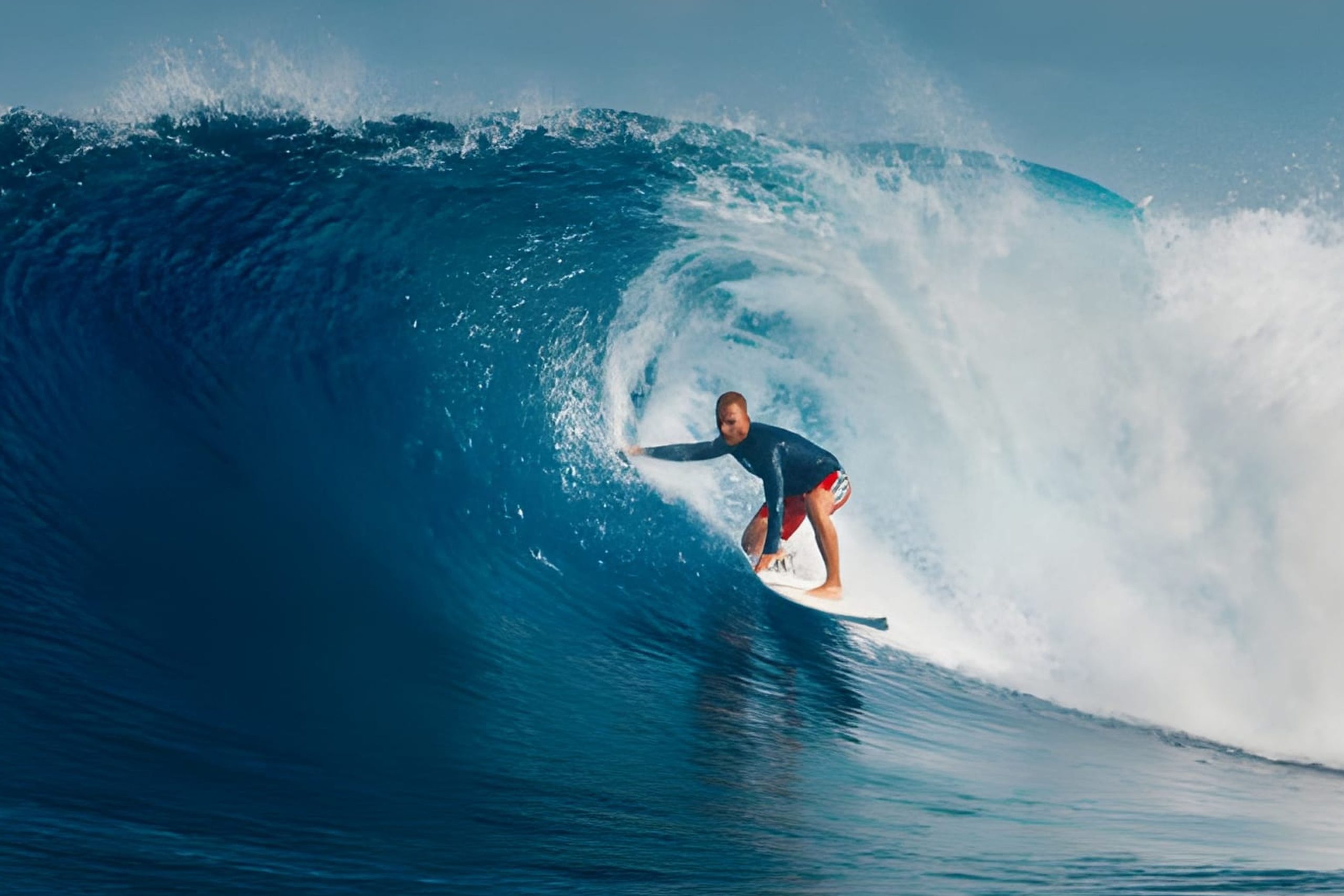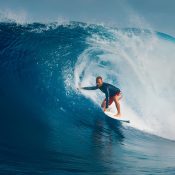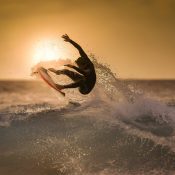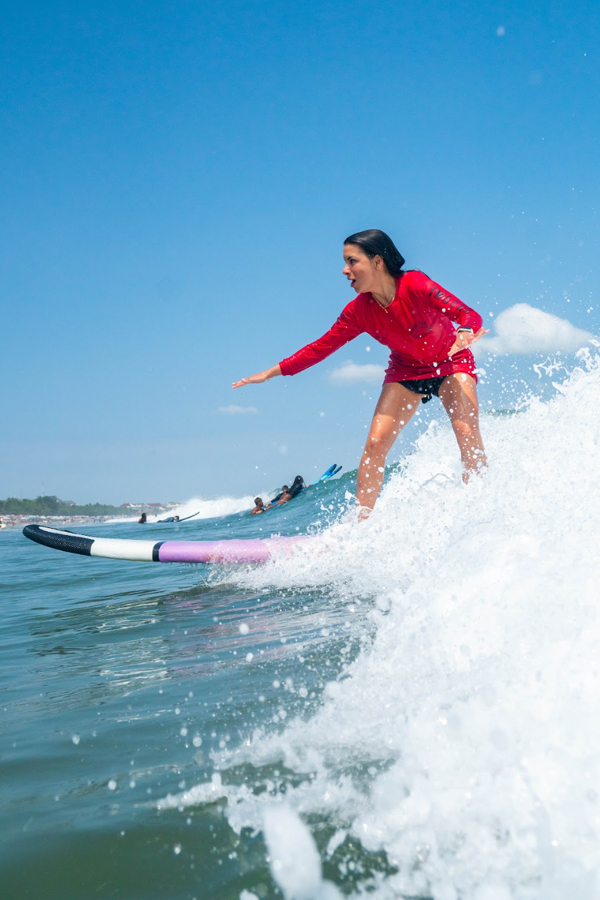Intermediate Surfer Skills: 7 Key Areas to Master Next

Intermediate Surfer Skills: 7 Key Areas to Master Next
You've mastered the pop-up, can catch green waves consistently, and no longer panic in the lineup. Congratulations—you've officially reached the intermediate surfer plateau! This is where many surfers get stuck for years, repeating the same maneuvers on the same types of waves without making real progress.
The transition from intermediate to advanced surfing isn't about learning fancy tricks—it's about mastering the fundamental skills that separate recreational surfers from truly competent ones. As coaches at Sōleïa Surf Academy, we've identified the 7 most critical skills that will transform your surfing from predictable to powerful.
The Intermediate Surfer's Crossroads
Why Most Surfers Get Stuck Here
The intermediate stage is challenging because:
- Progress becomes less obvious and more nuanced
- Bad habits become ingrained and harder to fix
- Fear of more challenging waves holds you back
- Lack of structured training replaces natural talent
Signs You're an Intermediate Surfer
- You catch 70%+ of the waves you paddle for
- You can ride along the wave face (not just straight to shore)
- You make basic top turns and bottom turns
- You understand lineup etiquette and can handle crowded conditions
- You're comfortable in overhead waves (up to 1.5x overhead)
Read also: Surf Progression Plan: From Whitewater to Green Waves
The 7 Essential Skills for Intermediate Surfers
1. Advanced Wave Reading & Positioning
Beyond Basic Peak Spotting
- Reading wave sections: Identifying closeouts vs. peelers before they break
- Tide and swell knowledge: Understanding how different conditions affect your local breaks
- Positioning intelligence: Sitting deeper for better waves vs. wider for safety
- Current management: Using rips and currents to your advantage
Practice Drills
- Spend 15 minutes watching waves before paddling out
- Keep a surf journal noting tide, swell, and conditions
- Ask experienced locals about specific break characteristics
2. Powerful Bottom Turns
The Foundation of Everything
A proper bottom turn generates speed, sets up maneuvers, and connects sections. Most intermediate surfers make these common mistakes:
- Turning too high on the wave face
- Not compressing enough through the turn
- Looking down instead of where you want to go
The Perfect Bottom Turn Checklist
- Compress deeply as you approach the bottom
- Look and lead with your head and shoulders
- Push through your back foot to generate power
- Time it right—not too early, not too late
3. Speed Generation & Maintenance
Beyond the Wave's Power
Intermediate surfers often lose speed between maneuvers. Learn to:
- Pump effectively: Use compression and extension to generate speed
- Stay in the pocket: The steepest part of the wave holds the most energy
- Link turns smoothly: Maintain momentum through fluid transitions
4. Frontside vs. Backside Mastery
The Technical Differences
| Aspect | Frontside | Backside |
|---|---|---|
| Vision | Easy to see the wave | Limited vision, rely on feel |
| Power Generation | Upper body rotation | Lower body and hip rotation |
| Balance | Natural stance | Requires more core strength |
| Common Mistake | Over-rotating | Not rotating enough |
Backside Development Tips
- Practice on smaller, forgiving waves first
- Focus on opening your shoulders toward the wave
- Use your back hand as a guide and balance point
5. Duck Diving Mastery
Beyond Basic Survival
A proper duck dive should feel effortless, not like a battle:
- Timing: Dive just before the wave breaks
- Technique: Knee on tail, deep push, foot boost
- Equipment: Appropriate board volume for your weight
6. Fitness & Paddling Efficiency
The Unseen Foundation
Intermediate surfers need next-level fitness:
- Paddling endurance: For longer sessions and bigger days
- Explosive power: For late takeoffs and quick recovery
- Flexibility: For better rotation and injury prevention
7. Mental Game & Wave Selection
Thinking Like an Advanced Surfer
- Patience: Waiting for the right wave, not just any wave
- Commitment: Going for maneuvers with full intent
- Adaptability: Changing strategy based on conditions
- Resilience: Learning from wipeouts and bad sessions
Bali-Specific Intermediate Training
Best Bali Breaks for Intermediate Development
| Break | What to Practice | Best Conditions |
|---|---|---|
| Canggu (Batu Bolong) | Linking turns on long walls | Mid tide, 3-5 ft |
| Berawa | Speed generation and section connecting | All tides, 4-6 ft |
| Balangan | Frontside flow and positioning | Low-mid tide, 3-5 ft |
| Keramas | Backside power and barrel technique | All tides, 4-6 ft |
Seasonal Training Focus in Bali
- Dry Season (Apr-Oct): Practice at Bukit Peninsula breaks for power
- Wet Season (Nov-Mar): Focus on east coast spots for technique refinement
Read also: How to Break Through a Surfing Plateau: Advanced Techniques to Level Up
Common Intermediate Mistakes & Fixes
The 5 Most Common Plateaus
- The Straight-Liner
- Problem: Riding straight down the line without turning
- Fix: Practice making at least two turns on every wave
- The Hesitator
- Problem: Starting maneuvers too late or pulling out
- Fix: Commit earlier and accept you'll fall sometimes
- The Stiff Surfer
- Problem: Rigid upper body limiting flow
- Fix: Focus on fluid upper-lower body separation
- The Wave Hog
- Problem: Poor positioning and wave selection
- Fix: Watch more, surf less. Study where good surfers sit
- The Gear Blamer
- Problem: Constantly changing equipment
- Fix: Stick with one board for 3+ months to master it
FAQ: Intermediate Surfer Development
With consistent practice (3x weekly) and focused training, most surfers can make significant progress in 6-12 months. Without structured coaching, many remain intermediates for years.
Many intermediates benefit from moving to a performance-oriented board (like a hybrid or fish) that's 2-4 inches shorter and slightly narrower than their beginner board.
Crucial! Focus on swimming for paddle power, burpees for pop-up explosiveness, and yoga for flexibility and balance.
The bottom turn. It's the foundation for generating speed and setting up every other maneuver in surfing.
Gradual exposure is key. Start with slightly overhead waves at familiar breaks, use a slightly bigger board for confidence, and always surf with more experienced friends.
Absolutely! Intermediate surfers benefit tremendously from video analysis and specific technical feedback that's hard to self-diagnose.
Track specific metrics: wave count, number of turns per wave, percentage of successful maneuvers, and comfort level in challenging conditions.
Conclusion: Your Roadmap to Advanced Surfing
Breaking through the intermediate plateau requires moving beyond comfortable patterns and deliberately practicing the skills that feel challenging. Remember that progression at this stage is measured in subtle improvements—a slightly more powerful bottom turn, better wave selection, or more consistent speed through sections.
The most successful intermediate surfers are those who embrace the process, seek qualified feedback, and maintain stoke through the inevitable periods of frustration. Each session is an opportunity to focus on one specific skill from this list.
At Sōleïa Surf Academy, we've guided hundreds of surfers through this exact transition. The journey from intermediate to advanced is one of the most rewarding phases in surfing—where you transform from someone who surfs waves to someone who truly dances with them.
Ready to accelerate your intermediate development? Book an intermediate coaching session with us and get the personalized feedback you need to break through your plateau.
All Categories
Recent Posts
Intermediate Surfer Skills: 7 Key Areas to Master Next
Surf Levels: How to Understand Where You Are with Your Surfing
Top 5 Surf Camps in Canggu Compared: Price, Location & Vibe
Start From € 5125,-
Our 12-weeks
Surf Academy Program in Bali





